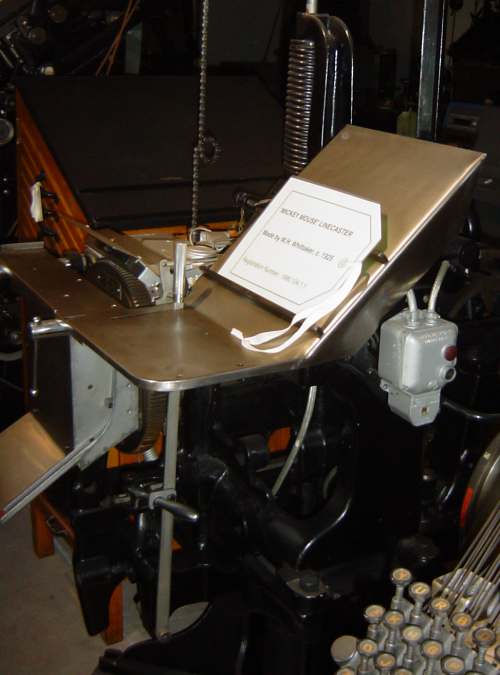The Intertype Monarch was designed without a manual keyboard. It relied totally on Teletypesetting (TTS) for setting type, using instructions from perforated tape.
It had an output of 14 lines per minute. A suction manifold held the matrices to the delivery belt as they were delivered at high speed to the assembler.









